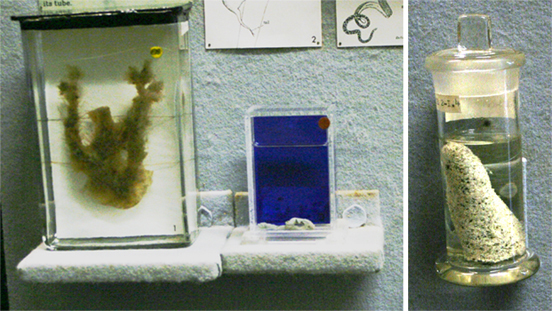
PHYLUM HEMICHORDATA | |
Hemichordates are marine animals. They are mostly burrowers in sand or mud, or live in algae or beneath stones. Their long bodies are divided into an anterior proboscis, a short collar and a long trunk. The mouth opens just in front of the collar. Distinctive features of hemichordates are a dorsal nerve cord and paired lateral gill clefts opening through the pharyngeal wall and the wall of the anterior part of the trunk. Hemichordates move by peristaltic contractions of the proboscis. They are deposit or suspension feeders trapping food with the proboscis; the food particles are then carried to the mouth by cilia. The sexes are separate; the larva, the tornaria bears a striking resemblance to that of echinoderms. The extinct group of animals known as Graptolites are now believed to be pterobranchs or closely related to them. Graptolites were minute, colonial marine organisms that became extinct some 300 million years ago. There are two groups of hemichordates: Class Enteropneusta (the free living acorn worms) and Class Pterobranchia (tube-dwelling animals with a pair of tentaculate arms on the collar used for suspension feeding). |
 |
|
|






